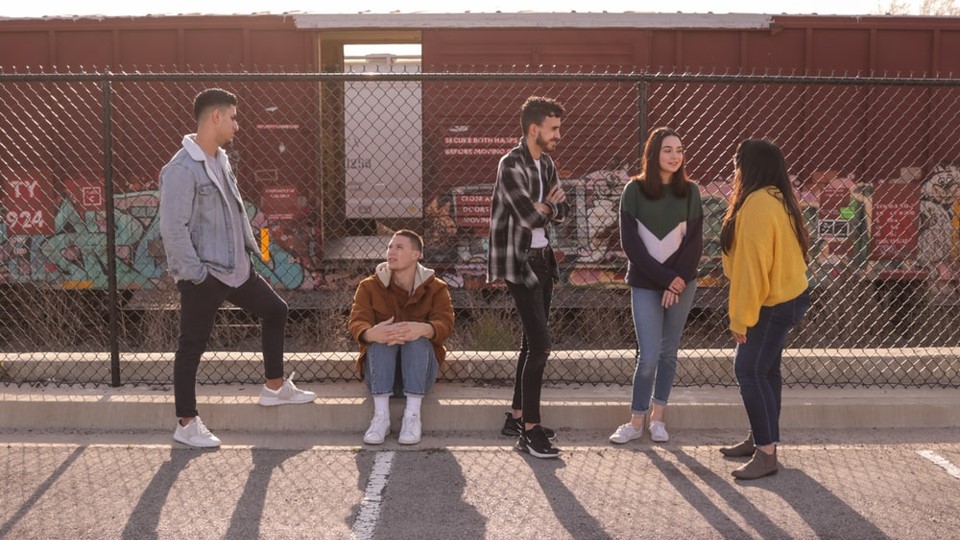
This article was originally posted on Research World as part of a new series of monthly articles that share the insights from a global survey with over 2,000 youths aged 11-18 years old.
This series will explore:
How youths currently use technology, such as voice and social media. For example, did you know that 47% of youths have more than one social media account on at least one social media platform?
How youths think emerging technologies will impact their education, working life and healthcare.
designing surveys for youths
Youths are a challenging population for research. Panels often don’t have participants aged below 18 years old. There are added complexities around ethics, consent and logistics, such as the child being ready to take the survey when you need them to. Couple this with significant behavioural, attitudinal and educational differences across different ages and things get complicated very quickly.
This article will explore four ways to overcome these challenges, all of which were used in a global survey on technology conducted with over 2,000 youths aged 11-18 years old.
1. collaborate with an expert
Your first point of call when designing surveys for youths should be to seek expert advice. As market researchers, we are often working on multiple projects in different sectors. Consequently, we cannot be experts in every sector we work in. Expert advice, therefore, helps steer questioning towards topics that are pertinent to youths and guarantees the terminology and tone is correct for that specific age group.
For example, when researching youths and technology, we collaborated with Dr Mary Aiken, world renowned cyberpsychologist and author of The Cyber Effect. Dr Aiken ensured our questions and topics were relevant to youths.
2. gaining the trust of parents and youths
Recruiting youths via their parents or guardians is obligatory for under 16 year olds. As such, the consent of the parent must be gained. Parents will only let their children take part in research if they trust the researchers. To gain the parent’s trust, it is important to:
- Reveal your research objectives – something that is not normally done. However, this is important for parents to decide if they would like their child to take part in the research
- Allow parents to start the survey at a later time or date if their child is not present
- Emphasise their child can stop taking the survey at any point and their responses are confidential
For youths, when they sit down to answer questions, it is usually a test. They need to be told that there are no right or wrong answers and that their honest opinion is the goal, not what they perceive to be the ‘right’ answer. Moreover, telling youths why they were chosen to take part in the survey ensures they feel their opinion is valued. When tackling sensitive topics, such as parental internet monitoring and multiple social media accounts, promising confidentiality to youths is also essential.
All these steps create trust and cooperation between researchers, parents and youths. This increases youth engagement and response quality.
3. speaking in a relevant tone for youths
Youth’s broad age range means your ability to converse successfully lives and dies by the language of your questioning. If the language is too complex, 11-year-olds will not understand it; too simple and 18-year-olds will ignore it. Survey writing often yields a sterile tone (how many times have you heard someone say “Please indicate” in conversation?) – a tone that can stifle engagement with youths.
Therefore, when conducting research with youths, dismiss survey writing conventions. Instead, focus on the golden rules of copywriting and design: communicate simply and in your audience’s language. This is manifested in the following:
- Use relevant background images for your survey topic and large buttons – aligning the interface with other platforms used by youths
- Avoid numeric scales – this removes interpretation and cultural biases
- Present a balanced perspective (in our case regarding how technology can be used) to avoid biasing an influenceable audience
4. carefully cover complex topics
Talking to youths about complex subject matter can be tricky. Some youths may be very knowledgeable on certain topics whereas others may be completely new to the subject. This is especially true when dealing with broad age groups and topics such as cloud storage and AI doctors.
Through clever question ordering, these challenges can be overcome:
- Test for awareness first without any prompts – you may be shocked at how much youths know. For example, 74% of youths in our survey knew a little or a lot about Virtual Reality. This allows you to scope the number of youths aware of each concept
- Then, introduce the concept with a standardised and easy to comprehend description
- Opinion can then be gained from all participants as they are all aware of the concept in question
- However, always include ‘Don’t know’ options – this ensures when an answer is given it is the youth’s true opinion and not a guess
Conducting research with youths is hard but not impossible. Hearing from a population often overlooked in market research is both fascinating and surprising. For example, the 11-14 year old’s in our research on technology actually prefer using voice technology to physical inputs, potentially because they have grown up with it just like the 15-18 year old’s have grown up with touchscreens. Check back in to Research World next month when we’ll share more insights on how youths view and use voice technology.
This post was originally published on Research World
By Matthew Hellon, Junior Research Executive
if you would like further information, please get in touch via:
MHellon@northstarpresents-volvo.com




